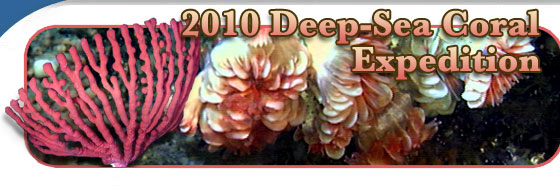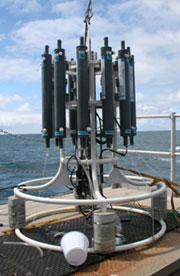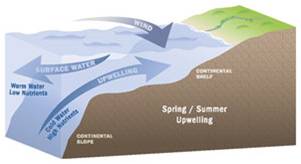 | ||||||||||||
|
|
|
|
|

On Thursday, June 17, team members for leg 2 of the deep sea coral cruise boarded the McArthur II in Port Angeles, WA. It took three days to transit south to the study areas within the Cordell Bank and Gulf of Farallones National Marine Sanctuaries. This time gave the team the opportunity to refine the sampling design, test the Kraken2 remotely operated vehicle (ROV) and CTD rosette (vertical water profiles of conductivity, temperature, depth and water samples). When we arrived at the first survey site, an underwater feature known as The Football, at 7am Sunday morning, the wind and sea conditions were too rough to safely deploy and operate the ROV. Unfortunately, the strong winds (25 kts) and large swell (8-10 ft) persisted for the next three days. These types of conditions are not uncommon for this area during the month of June as we are in the heart of upwelling season. Upwelling off of the California coast can occur from March-July and is the result of strong northwest winds and the south flowing California Current combining with the earth's rotation to drive surface waters away from the shore. These surface waters are replaced by an upwelling of nutrient-rich deeper water from offshore. The nutrients become available for surface dwelling phytoplankton (microscopic marine algae). Phytoplankton form the foundation of this oceanic food web and the combination of nutrients and increased sunlight in spring initiates a bloom of life that radiates up the food web. An abundance of phytoplankton, zooplankton, and young fish are food for animals at higher levels of the marine food web resulting in the biologically productive waters within the Cordell Bank and Gulf of Farallones National Marine Sanctuaries. Also, natural characteristics of upwelled waters are low dissolved oxygen and low pH (more acidic) which will be sampled during night operations by the CTD rosette water sampling team. So upwelling is a good thing, but the winds that drive this process create challenging conditions for conducting offshore exploration, especially with an ROV. The science team is standing by.
|
|
|||||||
|
||||||||||||





